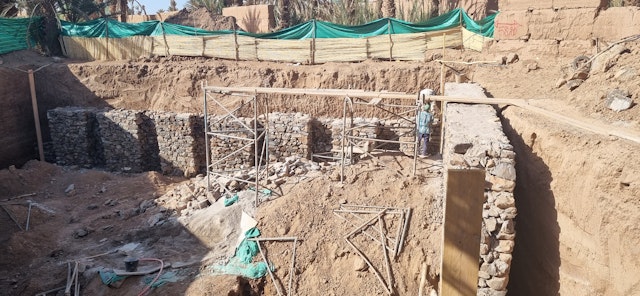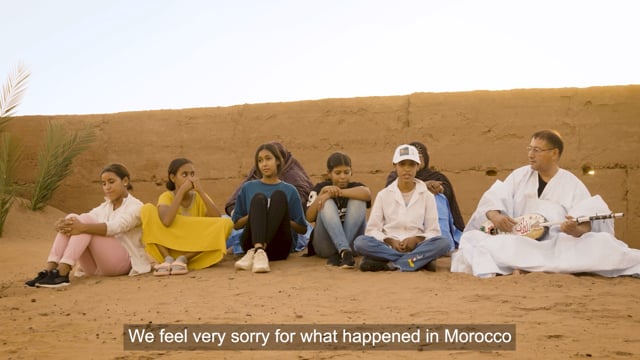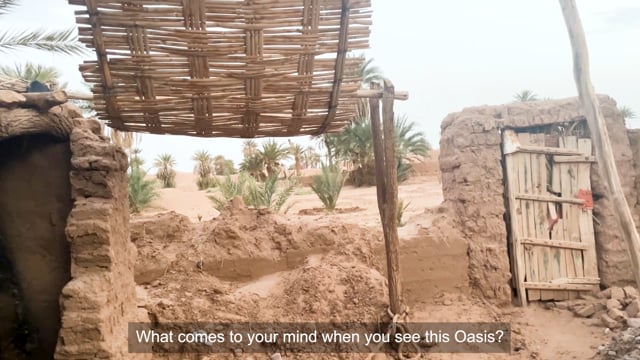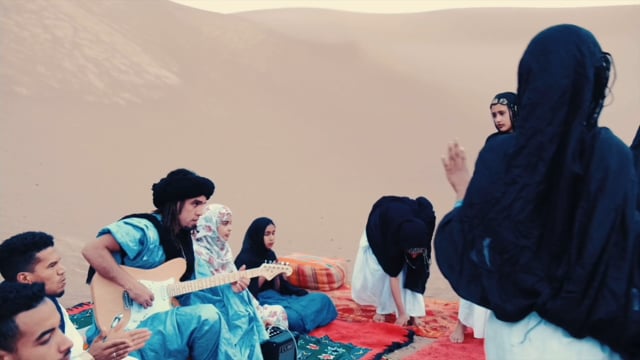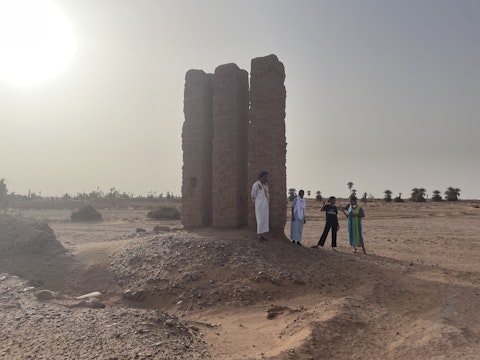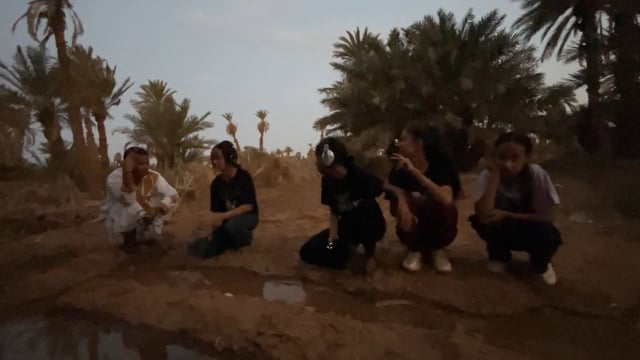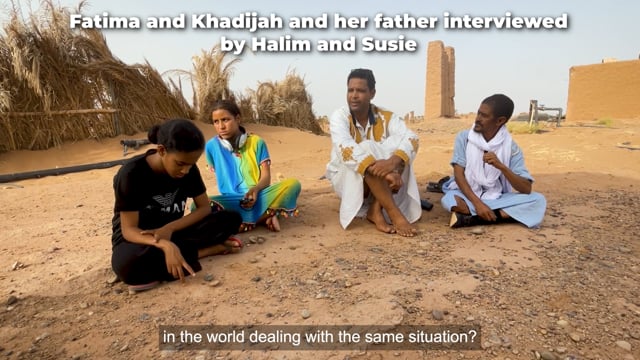Architect Aziza Chaouni and climate activist Halim Sbai speak about water boxes in the desert
Moroccan architect Aziza Chaouni and climate activist Halim Sbai discuss their efforts to plant trees in a desert where there aren't supposed to be any
Moroccan architect Aziza Chaouni and climate activist Halim Sbai discuss their efforts to plant trees in a desert where there aren't supposed to be any
Students record the discussion.
There are two systems for stopping desertification by sand invasion.
The first is a mechanism created like a fence using the brushes of date palms. These palms are woven and placed along desert lines, next to communities, roads and farms, to prevent the sand from progressing.
There is also an organic method of planting trees in the desert. The trees planted in M'Hamid and on the Joudour Sahara site are Tamarix and Acacia. These trees are endemic to the region and hold the soil in the sand, allowing the tree roots to sink deep into the earth.
The M'Hamid oasis was once very large. It contained a lot of water. In 1985, it began to experience climatic changes, along with a large influx of immigrants. Today, it is much smaller.
Halim and Aziza, with Sahara Roots, Playing for Change Foundation, and the community try an experiment to bring water boxes to develop a water economy. Their lead farmer Habib is overseeing the project. Small trees and Tamarix and Acacia seedlings are planted in boxes in the desert. The boxes are intended for a use similar to that of a pipe in the ground. In the event of humidity or rain, the boxes can store water for trees.
